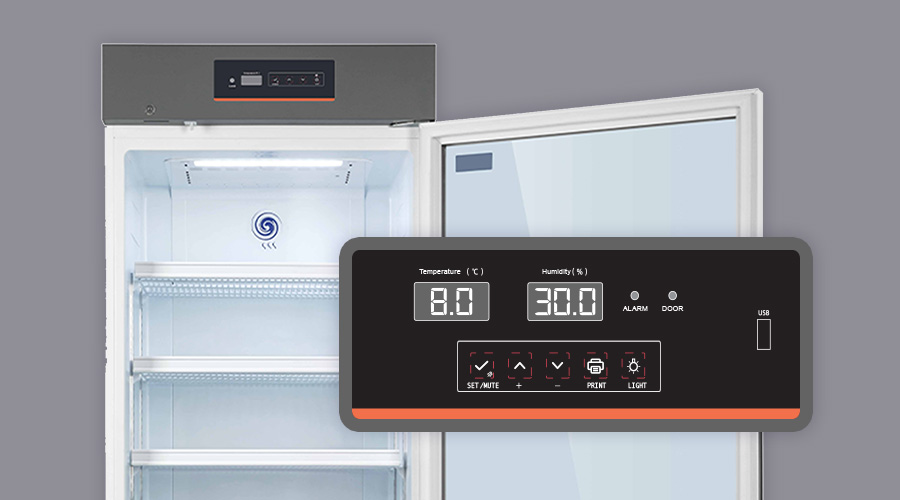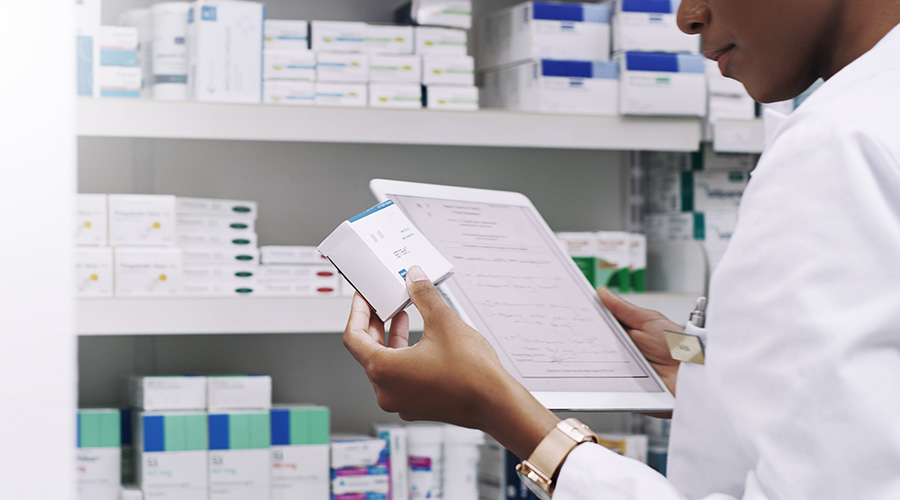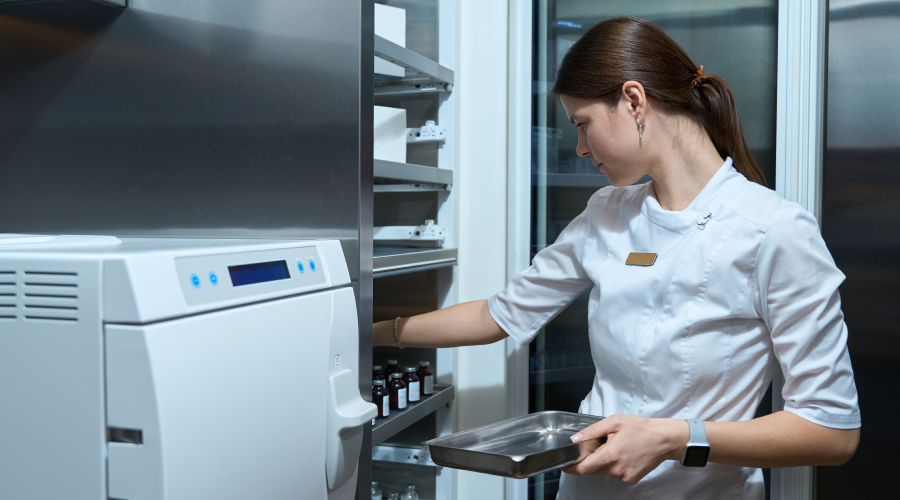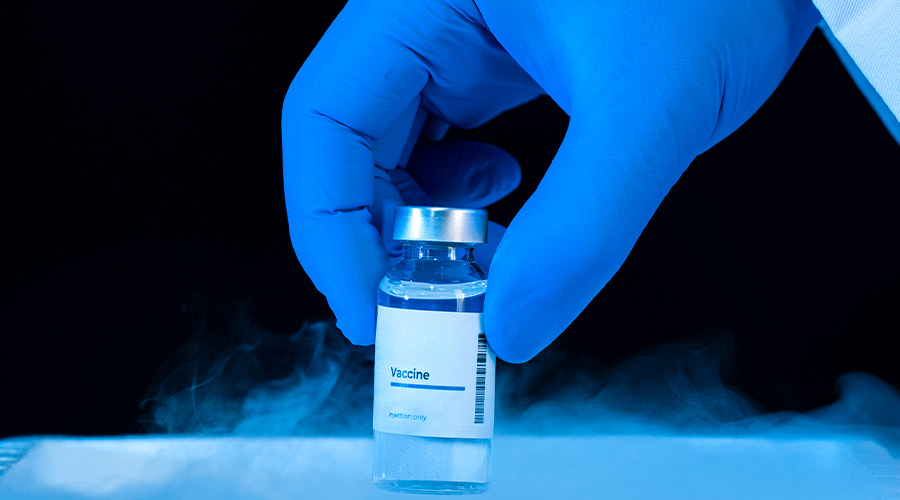Medication fridges must adhere to strict temperature guidelines of 2°C to 8°C for the safe storage of temperature sensitive medications and biological products. If these medications are not stored properly they will become unusable. Our comprehensive guide explains the temperature range for medication fridges, why strict temperature parameters are essential, and how to monitor and maintain the required temperature.
What is a Medication Fridge?
Medication fridges are refrigerators that are specifically designed for storing temperature sensitive medications, vaccines and biological samples. These purpose built fridges are crucial in healthcare settings like pharmacies, clinics and hospitals as they help ensure the safety and efficacy of medications and biological products. A medication fridge is designed with advanced features like temperature monitoring alarms and precise temperature control to ensure compliance with the cold chain guidelines as set out by the Department of Health.
What is the Cold Chain?
The ‘cold chain’ is the system of transporting and storing vaccines and other temperature sensitive medicines and biological samples within the safe temperature range of 2°C to 8°C. It was developed because temperature sensitive medications like vaccines need to be stored at low temperatures from the time they are manufactured, through transportation and storage, to the time they are administered. It takes this chain of coordinated events in temperature controlled environments to store, manage and transport potentially life-saving medical products.
Purpose- built medical fridges are an important part of cold chain management as they provide safe storage facilities for medications and biological products that require precise temperatures to survive. Medical fridges are designed to remain within the strict temperature range of 2°C to 8°C to ensure the potency of its contents. Medical fridges equipped with alarm systems and UPS battery backups can help safeguard against cold chain breaches.

How to Monitor the Temperature of a Medication Fridge
Regular monitoring of the medical fridge temperature is essential to ensure medications, vaccines and biological samples are stored within the cold chain. By monitoring the fridge temperature on a regular basis you can keep an eye on the medical products to make sure they are being kept at the appropriate temperature and don’t get damaged. There are many ways to monitor fridge temperature, ranging from manual thermometers and charts to more robust cloud-based systems that offer real-time information and alerts. These are the most common practices to monitor the temperature of a medical fridge, both manually and digitally.
Manual monitoring
Manual monitoring is a simple and reliable method of monitoring the temperature of a medical fridge. To manually check the temperature in a medical fridge requires a HACCP approved thermometer or temperature sensor with a real-time display. Staff members are usually assigned the job of monitoring the temperature on a regular basis twice daily, using the thermometer or temperature sensor. They record the current, minimum and maximum temperatures. The thermometers are reset after each reading.
Another way of manual monitoring is using temperature chart recording systems. The Department of Health has a downloadable chart which allows you to record the temperature, time, month, year, staff initials and any relevant information.
Digital monitoring
Digital monitoring can be done either semi automatically or fully automatically. Semi automatic digital monitoring is done with a basic data logger, while the latter uses automatic cloud connected loggers. Both digital monitoring methods record temperature readings at set intervals on a regular basis.
A basic data logger is a semi automatic logger that continuously monitors the temperature in the medical fridge. The data is then downloaded to a computer for analysis. This semi automated logger only requires manual intervention with the downloading of the recorded data.
Fully automated loggers are cloud connected data loggers that connect to the cloud and wirelessly save the temperatures from your fridge to the internet every few minutes. That means you never need to touch the logger or remove it from the fridge. They provide real time alerts in the event of a temperature fluctuation. These alerts are sent via sms, email or phone so that any breaches can be addressed straight away.
Another option for temperature monitoring is called a back to base alarm system. This is also an automatic temperature monitoring system. However, it does not record temperature on a regular basis but rather alerts staff when the temperature goes outside the safe guidelines of 2°C to 8°C.
How to Maintain the Correct Medication Fridge Temperature
To avoid a cold chain breach it is essential to maintain the correct temperature in a medication fridge. Here are essential tips for keeping the medical fridge at a safe and stable temperature.
- Consistent temperature checks: Regularly check the temperature via manual and digital monitoring. Check the temperature every time the door is opened. If temperature is outside the recommended range, implement cold chain breach protocol.
- Reset the minimum and maximum thermometer: After each manual reading, make sure to reset the thermometer to avoid any possibility of false readings.
- Avoid frequent door opening: Make sure the fridge door is only opened when absolutely necessary. Frequent door opening can cause temperature fluctuations within the fridge.
- Proper loading and organisation: Organise the items inside the fridge strategically so there is adequate air circulation. Make sure shelves are not overloaded or the fridge overcrowded as fridges are less likely to overheat with proper air circulation.
- Make sure the fridge is positioned properly: Medical fridges need to be placed in a location that will allow for ventilation and protection from sunlight. Ventilation around the fridge is important for keeping the temperature stable. This means when positioning a medical fridge, allow about 10cm of space around the sides and back. Make sure the fridge is not placed in direct sunlight which could also contribute to raising the temperature.
- Regular servicing and calibration: Medical fridges require regular servicing and calibration to make sure they are operating at their best, maintaining correct temperatures and adhering to regulatory standards. Servicing by qualified technicians should be done on an annual basis, unless any other issues arise within the year.
- Regular contents audit: Perform a contents audit on a regular basis, that might be once a week or once a month, depending on the volume of contents. This will keep track of the stock, potential expiry dates, their position in the medical fridge and ensure adequate spacing for ventilation.
- Regular cleaning: Cleaning your medical fridge on a regular basis includes the interior and exterior to prevent the buildup of bacteria. However, it is also important to clean the condenser to make sure the fridge is able to work at optimal performance and within strict temperature limits.
- UPS battery backup: Installing a medical UPS battery backup will provide backup electricity to medical fridges if there is a problem with the power source. This backup battery can help keep the medical fridge running and avoid any rise in temperature.
Keeping medications, vaccines and biological products within the temperature range of 2°C to 8°C is essential for their safety and efficacy. Medication fridges are purpose built to provide safe storage conditions as described within the cold chain guidelines. Otherwise these important and costly medical supplies would become redundant. Our complete guide delves into the precise temperature requirements for a medical fridge, best practices for monitoring a medical fridge temperature, and essential tips for keeping a medical fridge at a safe and stable temperature.




